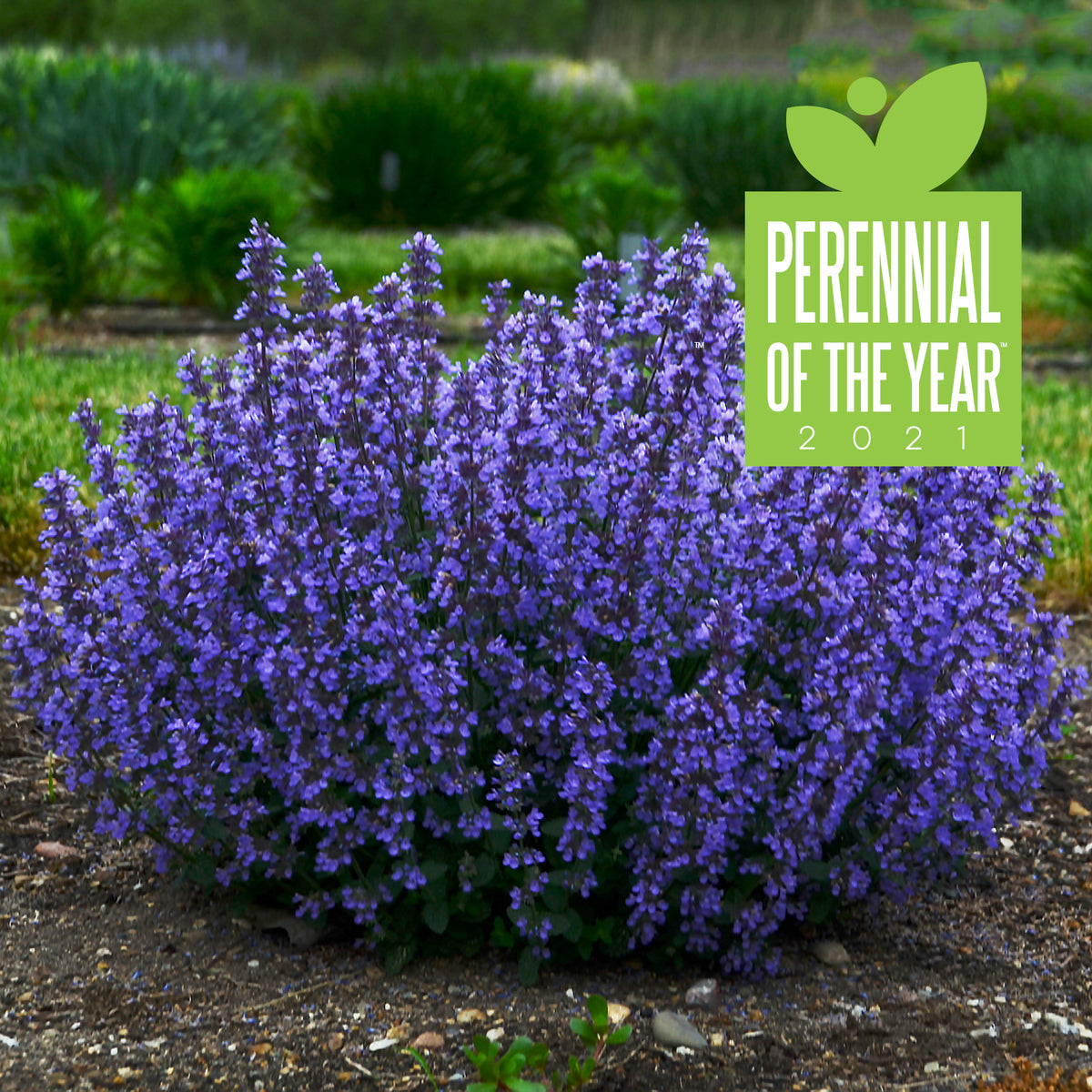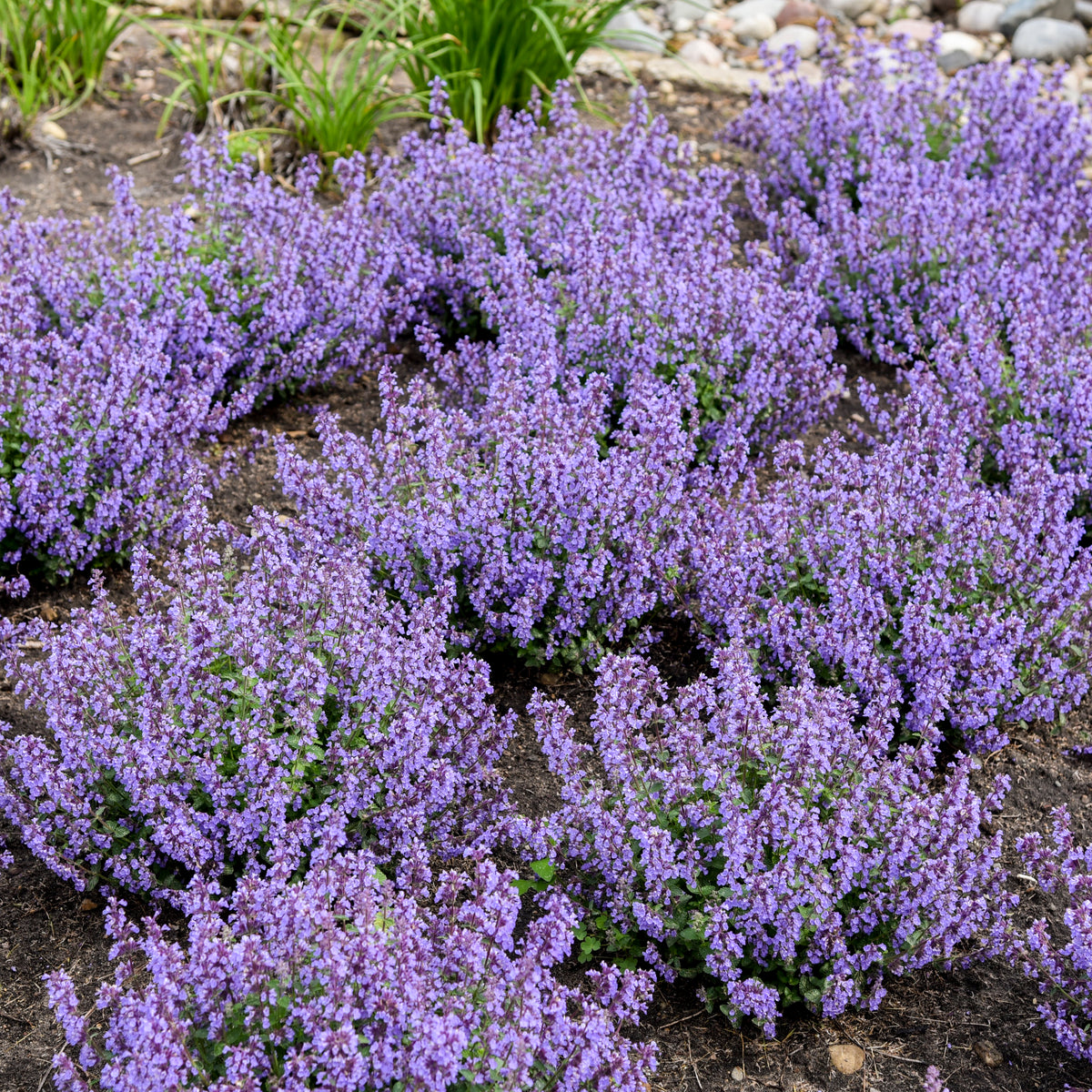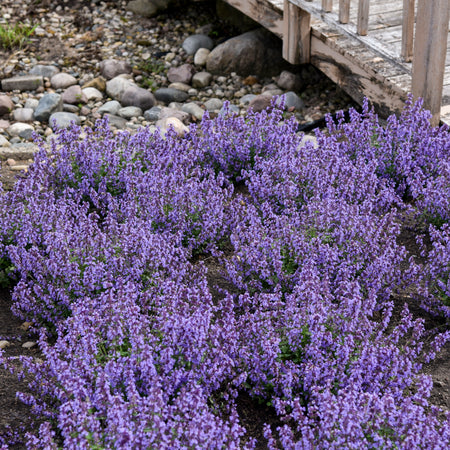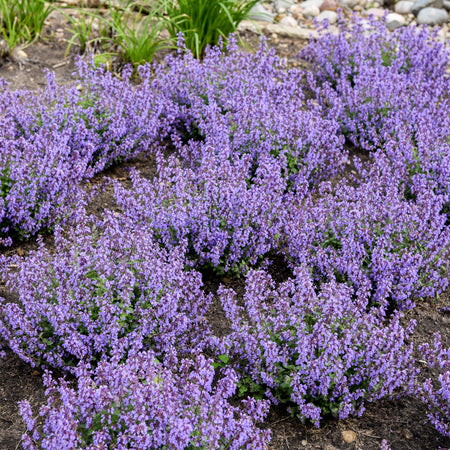Nepeta 'Cat's Pajamas' - Catmint
Nepeta 'Cat's Pajamas' PP31127 CPBRAF
Mature Height: 12 to 14 inches
Mature Spread: 18 to 20 inches
Couldn't load pickup availability
Shipping
| Bloom Color: | Purple with many flowers almost to the ground |
| Bloom Period: | early to late summer |
| Genus & Species: | Nepeta 'Cat's Pajamas' PP31127 CPBRAF |
| Mature Height: | 12 to 14 inches |
| Mature Spread: | 18 to 20 inches |
| Plant Spacing: | 14 to 18 inches |
| Planting Depth: | At crown level (base of the plant) |
| Planting Time: | Spring or mid to late-summer planting |
| Soil Type: | Prefers soil with good drainage, drought tolerant |
| Sun Exposure: | Full Sun |
| Zone: | 3 to 8 |
Proven Winners perennial of the year for 2021, we really like what we saw from Cat's Pajamas nepeta. More compact and dense than other sprawling varieties of catmint, in late spring through summer, Cat’s Pajamas fills with beautiful purple blooms that arch down from silvery green textured foliage. Unlike other varieties of catmint that bloom only near the top of the plant, Cat’s Pajamas has blooms that come down nearly to the soil line, taking a very hardy plant with decent appeal to a must have show-stopper in the garden. If you have room, plant it in bunches for a sensational purple effect.
As an added bonus, the plant has a nice aromatic scent that keeps deer and other wildlife away, but that cats actually do love. For those looking for an ultra-easy to grow perennial that is at home in foundation plantings, border gardens, rock gardens, and even containers nepeta is an excellent choice.
*Photo Credit: Walter Gardens
General care for any tree or shrub is easy, but like any living thing will require your attention. Please educate yourself and follow these simple rules.
Nepeta 'Cat's Pajamas' - Catmint
Beloved because they are easy to grow these perennials will provide a great show of purple color for a long period during the summer. They prefer full sun and will do best in ordinary, but well-drained soil. Cutting the plants back in the spring will promote more compact growth and cutting the entire plant back by half after the first blooms will often stimulate a second bloom.















